Where in the World
There are more beautiful places on Earth than are truly fathomable. And yet, climate change is driving those places into further obscurity, overtaking them. Where in the world will be safe? What can we do? Read these six books from our July/August 2018 issue to find out.
Can Business Save the Earth?
Innovating Our Way to Sustainability
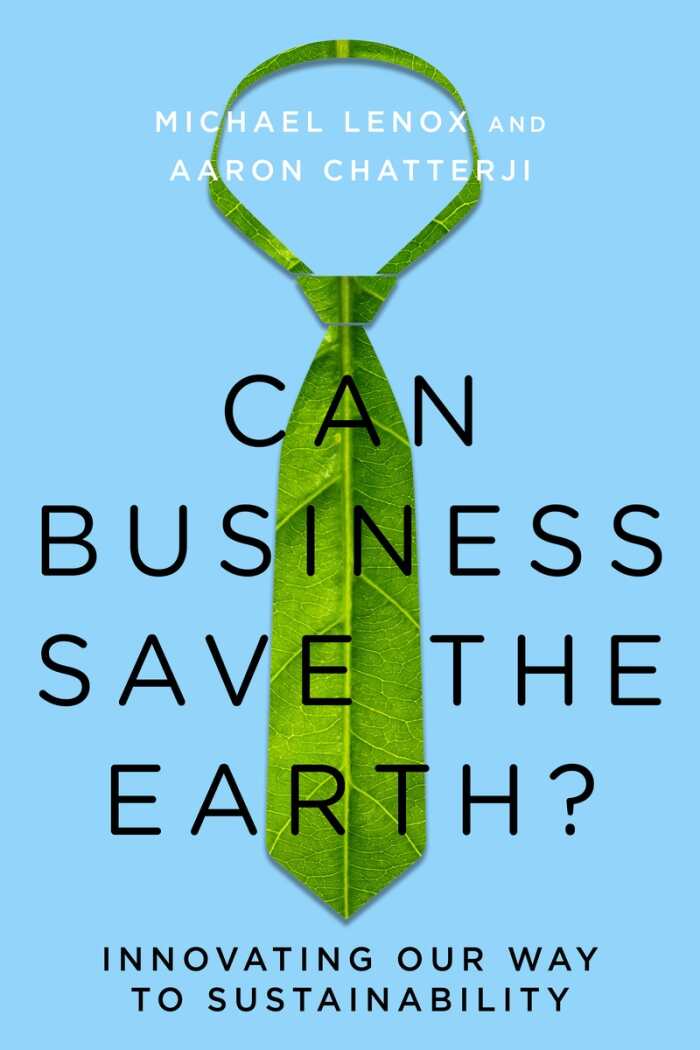
Michael Lenox
Aaron Chatterji
Stanford Business Books
Hardcover $29.95 (200pp)
978-0-8047-9099-4
Buy: Local Bookstore (Bookshop)
There is bad news and good news about the state of the earth, and business school professors Michael Lenox and Aaron Chatterji address both with eye-opening accuracy in this compelling, provocative treatise.
The bad news, of course, is “the existential threat posed by a changing climate and environmental ‘unsustainability,’” write the authors. The good news, however, is that they believe businesses—working in concert with the government, educational institutions, and nongovernmental organizations—can come to the rescue.
In a lucid, well-constructed argument, Lenox and Chatterji lay out “a model of innovation” that elegantly brings together many individuals and institutions, participating collaboratively to move products and services “from research to development to commercialization to scaling and diffusion.” After a description of the system, the book ponders how each of four different kinds of individuals—innovator, manager, investor, and customer—will contribute to this system.
Organizing the book in this way enables one to both understand and identify with these individuals and the roles they play. In discussing the manager’s role, for example, the authors point out that “green business can be good business,” citing examples and studies to back up this argument. The chapter concerning the customer may be the most sobering. Here, the authors write, “Business cannot save the Earth without consumers choosing sustainable goods and services from available alternatives.”
A final chapter in the book reiterates and expands upon the roles of the players, demonstrating the interactions required among all of them. The authors make an impassioned plea, particularly to businesses, to bring to market the innovative products and services necessary to create value while reducing environmental impacts. While the tenor of Can Business Save the Earth? is generally positive, one cannot miss the real sense of urgency it conveys.
BARRY SILVERSTEIN (June 27, 2018)
Cold Rush
The Astonishing True Story of the New Quest for the Polar North
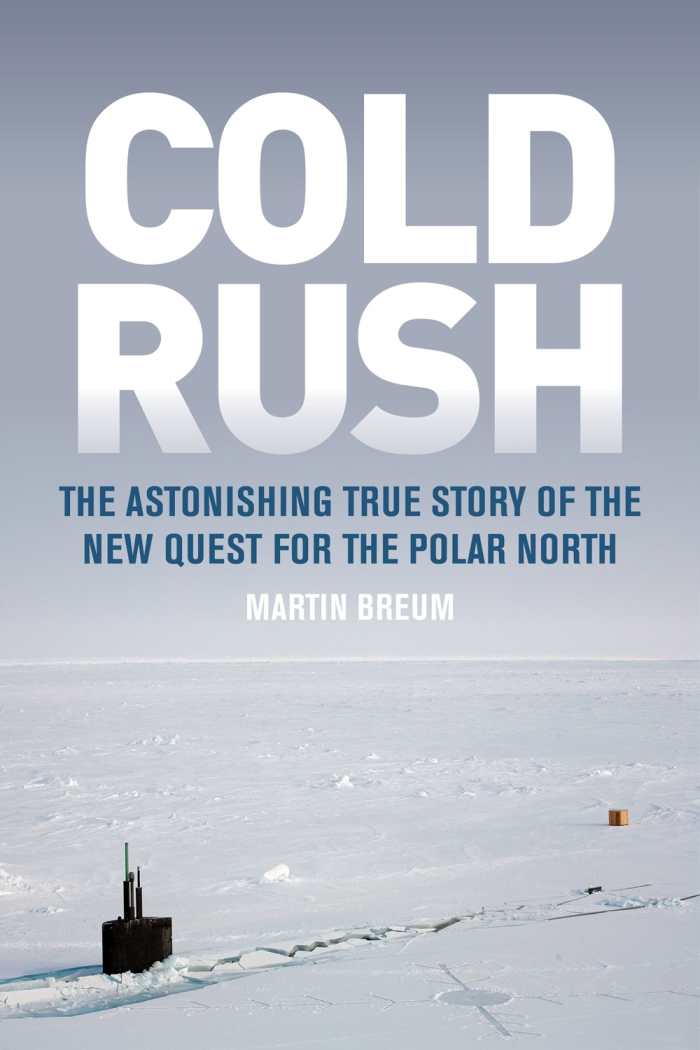
Martin Breum
McGill-Queen’s University Press
Hardcover $34.95 (224pp)
978-1-78831-242-4
Even as climate change causes the perilous decline of Arctic ice, an international race is taking place to determine which nation will control the area’s vast natural resources. Arctic expert Martin Breum offers an eyewitness account of a decade of jockeying for position by Canada, Denmark, Greenland, Russia, and the United States.
As early as 2007, Denmark called for a conference that, as Breum reports, ostensibly sought peace among these five nations; more importantly, it was about “securing the riches in the Arctic for themselves.” The resulting Ilulissat Declaration established a power structure based on international collaboration.
In his reportage, Breum documents how things have turned out to be more complex in the decade following the Declaration. Tracing the changes that have occurred over the years, the book is a chronology of the fascinating posturing of the nations who wish to control Arctic resources. Intertwined with the quest for such riches is the desire by Greenland to gain independence from Denmark; this complicating subplot is just as intriguing as the primary narrative.
Breum’s firsthand experiences and observations distinguish Cold Rush. For example, he recounts his voyage with Danish scientists on a polar excursion intended to collect data to prove that Denmark and Greenland own the seabed. Not only is this claim contested by Russia, it is also disputed by China. This is an ever-changing story that has yet to be resolved. By 2015, Russia was submitting its own claim to the Arctic ocean floor to the United Nations, even as Canada was preparing to do so three or four years later.
Breum has the journalistic ability to remain objective yet share the perspectives of each nation’s leaders and show the intricacies of their interactions. This provides a richness of insight that makes Cold Rush an uncommonly intriguing work of nonfiction.
BARRY SILVERSTEIN (June 27, 2018)
Eager
The Surprising, Secret Life of Beavers and Why They Matter
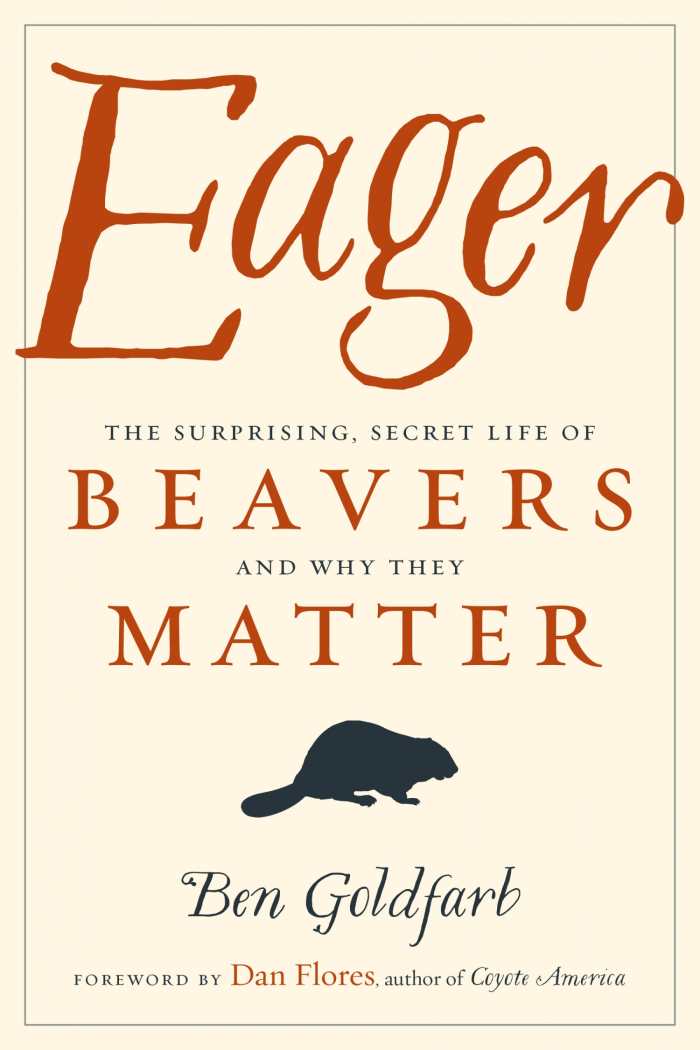
Ben Goldfarb
Chelsea Green Publishing
Hardcover $24.95 (304pp)
978-1-60358-739-6
Environmental journalist Ben Goldfarb’s lively and educational Eager: The Surprising, Secret Life of Beavers and Why They Matter shows why beavers should be respected as “ecosystem engineers.”
Goldfarb is a fan of beavers, but he admits that they are not loved by all. To some, he writes, “beavers still appear more menacing than munificent.” This book is an excellent antidote to that attitude. It traces the history of beavers, tying their evolution to the colonization of North America, and shows their positive impact on the natural environment. Goldfarb also uncovers how humans who recognize beavers’ importance help by relocating them to areas where they can do the most good.
In addition to being enlightening, Eager is filled with unusual beaver-related stories. One can learn about “the world’s largest collection of beaver-themed” items (it’s located in Martinez, California), and “one of the largest beaver relocations ever undertaken” (it took place from 1986 to 1999 to the north of Yellowstone National Park).
Perhaps most interestingly, Eager addresses both the positives and negatives of the beaver-human-ecology relationship in a thought-provoking way. Goldfarb ponders important issues, suggesting, for example, “whether it’s appropriate to build artificial beaver dams in national parks is an ethical question as much as a scientific one.” He also discusses the possible downside of beaver-based restoration: “The landscapes where beavers can do the most good aren’t always ready for them.”
The author perceptively and eloquently concludes that, while beavers were almost obliterated in the early twentieth century and were saved by humans, now “it’s we who need their help—to store and clean water, to rebuild flood defenses, to repair degraded rivers, to revive biodiversity.”
Eager offers rare insight into the history of beavers and their behavior, qualities, and characteristics. Even more importantly, Eager explores the animals’ complex relationship with humans, and the essential role they play in developing ponds and streams that support wildlife.
BARRY SILVERSTEIN (June 27, 2018)
In Defense of Public Lands
The Case Against Privatization and Transfer
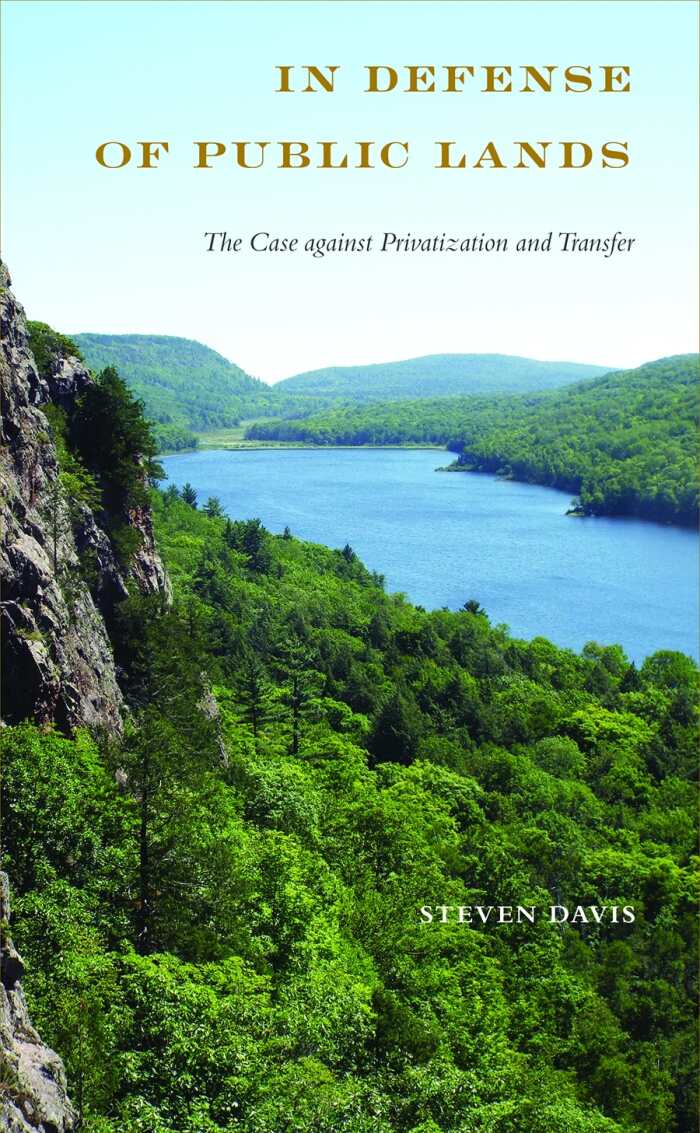
Steven Davis
Temple University Press
Softcover $29.95 (264pp)
978-1-4399-1537-0
Buy: Local Bookstore (Bookshop)
Public lands are a gift for which all Americans should be grateful, and Steven Davis, a professor of political science and environmental studies, believes these lands should remain public. He builds a thorough argument in his impassioned treatise, In Defense of Public Lands, in which he views the public-versus-private debate from both sides.
Davis begins by dramatically calling attention to the vast amount of public land in the United States—almost thirty-seven percent of total land mass. He then contrasts the ownership of this land by state and federal governments with the desire to privatize it.
The author does an admirable job of positing the arguments of privatization proponents before devoting the remainder of the book to building a strong case for keeping land in public hands. The economic argument is particularly compelling; the book cites “meticulously calculated ROI studies” from the Trust for Public Land, indicating that the ROI for state land acquisition programs ranges from 400 to 1,100 percent. Davis doesn’t stop there; he also presents lucid ecological and political arguments in support of public lands.
Davis acknowledges that the public-versus-private land debate has entered a “new era.” In what may be the most heartfelt section of the book, the author enumerates specific ways in which public lands must be defended against those seeking privatization; these arguments include “frame public lands as a patriotic imperative,” “seize the historical narrative,” and “build as broad a coalition as possible.” The book ends with an insightful assessment of “public lands over the long term,” as well as an elegantly written concluding section that answers the question, “What Are Our Public Lands For?”
This is a convincing and fervent plea for the country’s public lands, which the author calls “a unique treasure and the envy of the world” to be preserved.
BARRY SILVERSTEIN (June 27, 2018)
Iron and Water
My Life Protecting Minnesota’s Environment
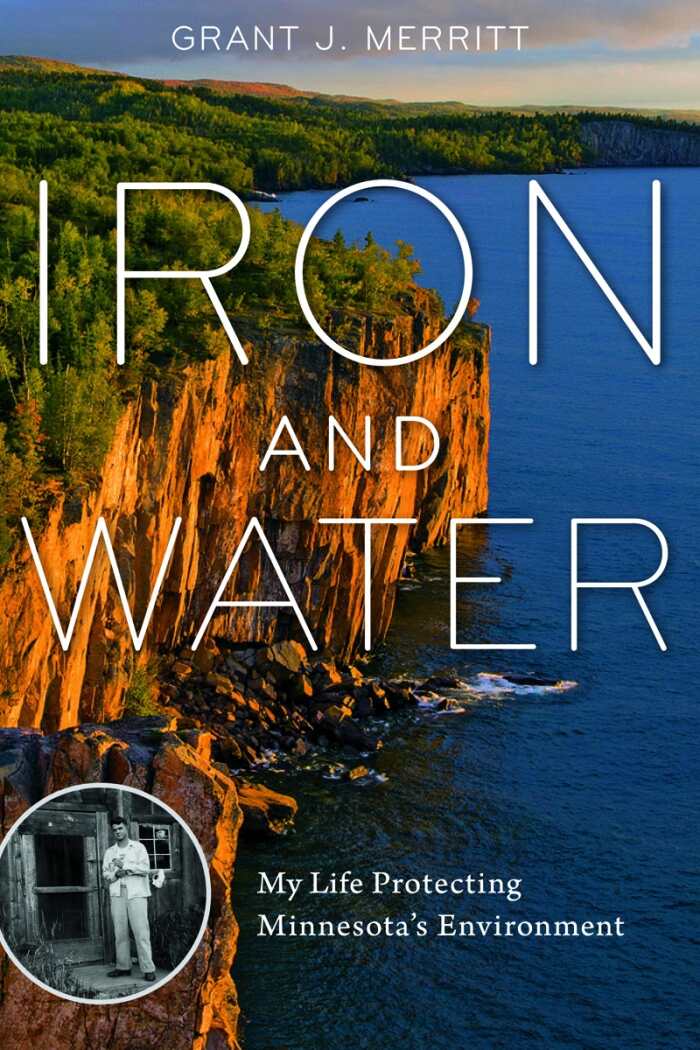
Grant J. Merritt
University of Minnesota Press
Softcover $24.95 (216pp)
978-0-8166-7881-5
Buy: Local Bookstore (Bookshop)
Lifelong environmental activist Grant Merritt grew up in a mining family—literally close to the earth. His ancestors respected the land, mining iron ore near the surface instead of burrowing underground.
Merritt’s memoir reads like a saga of sorts. He starts with the heart-wrenching story of the Merritt family’s relationship with the Mesabi Iron Range, explaining how the family was undercut by John D. Rockefeller, who foreclosed on their holdings. But it was much later in Merritt’s own career that he faced another foe, Reserve Mining, a company that was polluting Lake Superior “with sixty-seven thousand tons of taconite tailings per day.”
A significant portion of the book focuses on the role the author played, working for the Minnesota Pollution Control Agency (MPCA), in the fight against Reserve Mining, putting the heightened awareness of environmental protection into context. The tale Merritt tells about the legal case against Reserve Mining offers a behind-the-scenes perspective on how a government agency can be a responsible steward of the earth.
Clearly, Merritt took more than a casual interest in environmental justice; for almost four decades after he served in the MPCA, he worked on environmental cases and causes. His considerable experience makes his historical assessment of the environmental field all the more relevant. He believes there has been substantial progress since the environmental movement of the 1960s, but he notes, “Even with good environmental review laws in place, it still takes an alert citizenry, as well as a strong and responsive government, to make sure the laws are enforced.”
Iron and Water is really about the passionate commitment and valiant effort of a man and his concerned colleagues to ensure that Minnesota’s environment is protected. In that respect, Grant Merritt’s enthralling story is a model for activists everywhere.
BARRY SILVERSTEIN (June 27, 2018)
Polar Bears in the Wild
A Visual Essay of an Endangered Species
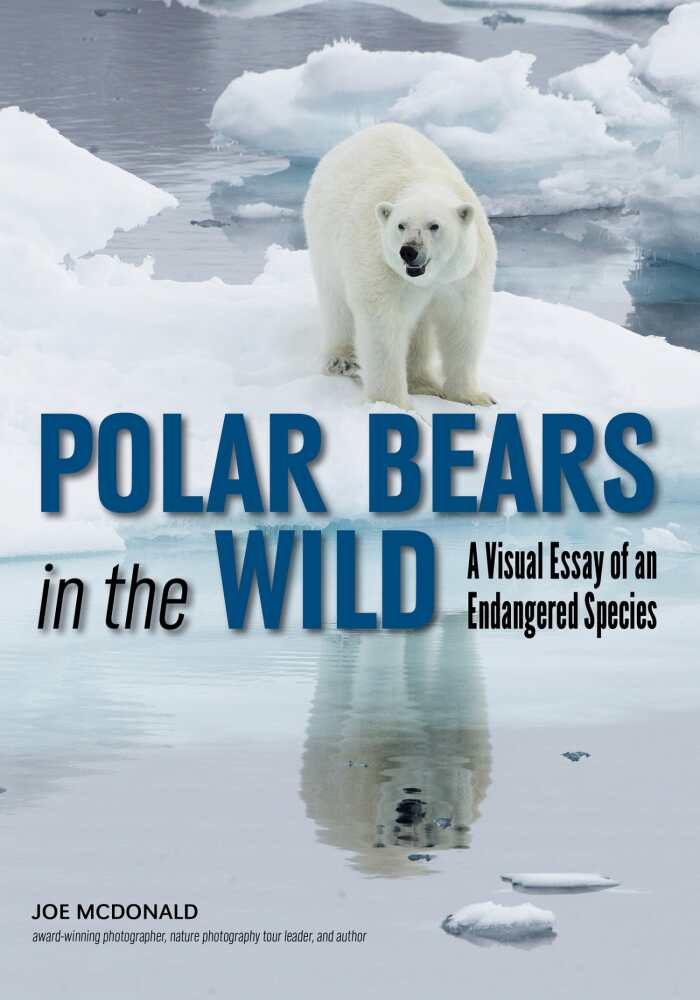
Joe McDonald
Amherst Media
Softcover $24.95 (128pp)
978-1-68203-336-4
Buy: Local Bookstore (Bookshop)
Outstanding color photography distinguishes this “visual essay” by award-winning photographer Joe McDonald.
The polar bear, certainly one of the planet’s most recognized animals, is also one of the most endangered. “Today,” writes McDonald, “this magnificent predator, the largest non-marine carnivore on Earth, is in danger of extinction.” This sublime book melds an informative text with intimate photographs of the polar bear, presenting a story of precarious survival. Each of the book’s highly visual chapters discusses aspects of the bear’s life on land, on the ice, as hunter, as parent, and at play.
Brief yet enlightening, the text acts as a bridge from one photograph to another. Accompanying each photograph is an explanatory caption that perfectly describes the picture’s action. The photos—some by McDonald, others from outside contributors—are all of superb quality. Each captures an uncensored moment in the life of a polar bear in its natural habitat. McDonald writes that this work represents “one of the most diverse collections of Polar Bear photographs ever published.”
While some of the hunting photos are unflinchingly brutal, there are many more shots that are charmingly engaging. There are photos of bears in differing light, photos of adults in various colors (McDonald points out that polar bears are not only white but can appear yellow and sometimes even brown), and photos of mothers and cubs. In addition, there are photos of other arctic animals, including birds, foxes, and seals.
This book offers a rare, up-close-and-personal view of the polar bear that leads to a true appreciation of the animal’s harsh lifestyle. As McDonald eloquently states, “One could, perhaps, liken the Polar Bear to the proverbial canary in the coal mine, a harbinger of threats all of us may face in the not too distant future.” Polar Bears in the Wild is a visual feast to be savored.
BARRY SILVERSTEIN (June 27, 2018)
Barry Silverstein

